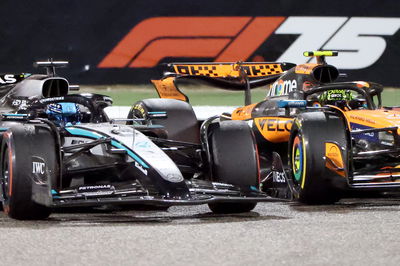A series of attractive rule changes have been proposed to improve F1.
Formula 1 is a sport with such complex regulations that are constantly changing to keep up with the technological development of teams and their cars.
But that means that some rules can inspire onlookers, even paddock staff.
Crash.NET writers point out important rules changes that will change F1 for the better…
Conor McDona: Unlimited DR in qualifying rounds. This was the case when drug recovery systems were first introduced in 2011. Some drivers, such as Red Bull’s Sebastian Vettel, will keep the DR open via high speed corners such as Suzuka’s 130R.
This change will underscore the willingness of drivers to take risks. Of course, this is short-lived as DRS will be replaced by active aerodynamics next year.
Lewis Duncan: Sprint weekends produced some plots by effectively removing all practice time and forcing the team to jump directly into the action. Only FP1 competing before Sprint qualifying adds a true sense of unknown to F1 weekend.
In such a long season, F1 must eliminate all practice sessions except one practice session in every round, and force teams to participate in the qualifying round straight.
On non-sprint weekends, this could reduce the Grand Prix from three to two days. Sprint weekend remains the same length. Sprints sometimes add interesting curveballs, but when a standard weekend gets shorter, the team is always on the toes.
Formula 1 teams have so many tools to collect data, and sim sessions are performed at the same time as what’s happening on the track on the race weekend. Theoretically, it should be less tracking time for everyone, but the playing field should be somewhat narrower, but it focuses on individual driving capabilities.

Mercedes, McLaren
Lewis Lalcum: After being initially skeptical when it was first introduced in 2021, I was warmed up to the idea of sprint racing.
There are fewer practice sessions and more meaningful track running, which is definitely the format I prefer. It especially helps to split the same sense of Grand Prix’s weekend structure, which is becoming a saturated F1 calendar.
The problem I have with Sprint Race is sometimes exciting, but the current format is that it works effectively as a bit of a spoiler about what happens at the Grand Prix on Sunday. Teams can make changes to the car and respond to sprint learning. This removes elements of randomness and danger.
Trying reverse grid sprint races on the entire field or just the top 10 will be fun to add unpredictability and excitement to the mix at least once. Additionally, rules must be taken into consideration to stop teams trying to qualify for a sprint to get better grid positions.
Derry Munikartono: For F1, I think you will need to get the page from the MotoGP playbook for qualifying. Pull it back into two segments (Q1 and Q2) in 25 minutes each, and set up the stage using the Friday afternoon FP2 session.
Here’s how it works: The top 8 of FP2 goes straight to Q2, but everyone else needs to discard it in Q1 at the last two spots. It’s simple, high stakes, no room for cruising.
Increases Friday’s intensity and turns FP2 into a proper fight from the test of glory. Drivers and teams must push their best tickets hard, knowing that it could be a golden pass to pole competition.
Rachit Thukral: Sprint schedule. Technically it’s not the rule, but I’m not a fan of Saturday morning sprint races. If the sprint is important enough to maintain, it should be the headline for Saturday events rather than a qualifying sideshow.
You receive the logic of maintaining qualifying to schedule consistency on a Saturday afternoon, but if you place it after the sprint race, the sprint feels like an afterthought.
Liberty has its own spotlight as it removes the leaf from the MotoGP format and can retain the sprint as an independent late event a few hours after qualifying.


